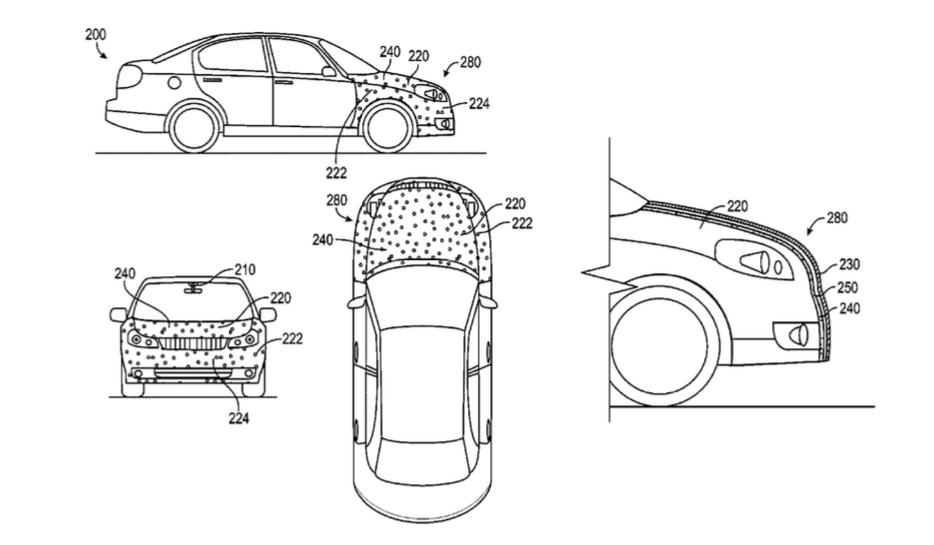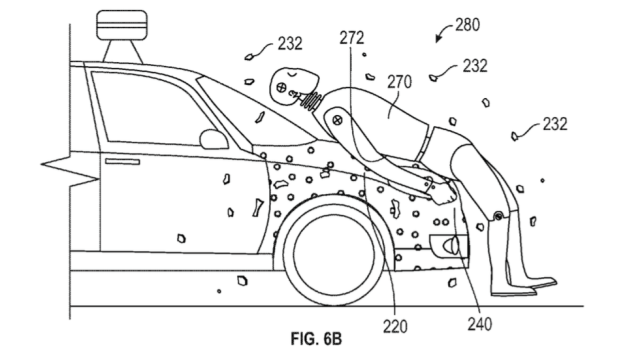Google loves to brag about how its self-driving cars and their ability to save lives by being really good at not crashing into things. But crashes do still happen, and when they do, Google apparently has a backup plan: human flypaper.
Lead Image from Google patent number 9340178
Yesterday, Google was awarded a patent that proposes placing a strong adhesive on the hood of its autonomous cars. This way, pedestrians or cyclists who happen to find themselves being struck by a Googlemobile would be protected from what’s called “secondary impact.” This is the part of a crash, when a person is thrown back off the moving vehicle, usually hitting the roof of the car, the hard surface of the street, or another car. It’s often the part that causes the most serious injuries.
The patent was filed back in 2014 and seems to be designed as a temporary solution to keep the humans around the self-driving cars safe as autonomous technology improves:
While such systems are being developed, it must be acknowledged that, on occasion, collisions between a vehicle and a pedestrian still occur. Such safety mechanisms may become unnecessary as accident-avoidance technology is being further developed, but at present it is desirable to provide vehicles with pedestrian safety mechanisms.
As for what kind of glue Google is planning to smear across its hoods, it’s described in the patent as having some kind of “eggshell”-like coating over the main adhesive layer so the car doesn’t drive around scooping up insects and other small animals like actual flypaper.

Where the adhesive would be applied, according to Google patent number 9340178
But would this even work? A single collision with a sticky hood is better from a physics standpoint, according to Rebecca Thompson, head of public outreach for the American Physical Society.
“Getting hit by a car once is much preferable to getting hit by a car and then the ground and then another car,” said Thompson. “Cyclists wear helmets not as much to prevent their head’s impact with the car as much as their head’s impact with the ground when they fall.”
Turning cars into giant glue traps is certainlya feature that could have applications beyond autonomous vehicles. Why not have this on all dangerous moving objects?
Well, it’s not a flawless idea, said Thompson. With a pedestrian or cyclist stuck to the front of a car, the car might have trouble moving to safety — or it might drag the human’s legs or arms under the car, inflicting new injuries. But she also points out a benefit for regular cars: having a person stuck to the hood might prevent a human driver from fleeing the scene. That would definitely cut down on hit-and-runs.
A lot of other automakers are thinking about how to mitigate pedestrian injuries in crashes. Nissan’s “pop up engine hood” uses tiny explosives to slightly raise the hood of the vehicle once it senses an impact to help stop pedestrians from hitting their heads. But Google’s patent for pedestrian safety glue is especially creative.
Of course, as a Google rep told the Mercury News, this doesn’t mean we’ll see the human flypaper idea come to life. It’s just another way that shows how Google is thinking about helping its robots to keep more humans alive on our streets.
[US Patent Office via Mercury News]
